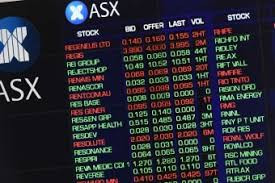Weekly market update - 21st of January 2019
Written and accurate as at: Jan 21, 2019 Current Stats & Facts

The Australian equity market continued to bounce back as investor sentiment improved from its December lows, gaining around +1.8% despite a relatively quiet week of news-flow. A +2.2% shift in the banks helped drive the market, while the smaller end of the market also continued to recover, with the Small Ordinaries up +2.5%. The yield-sensitive A-REIT sector underperformed, while still gaining +0.5%.
There was some movement on the M&A front. The consortium led by private equity group BGH upped their existing bid for education stock Navitas (NVT, +13.6%) from $5.50 per share to $5.825. This is something of a departure of recent market trends which has seen bidder interest wane following due diligence. NVT’s management have indicated that they will recommend the improved terms to shareholders. The market is also awaiting the next move from BGH as it completed its due diligence on health provider Healthscope (HSO, +5.6%), owner of the recently opened Northern Beaches Hospital.
Sydney Airport (SYD, -3.0%) released its December traffic figures. While broadly flat in aggregate, there was +3.5% growth in international traffic, while wild weather saw a -2.5% decline in domestic. There have been reports that international airlines, feeling the pinch from oil prices, are considering cutting services to Australia. This is not good news for SYD, but is a potential positive for Qantas (QAN, +4.1%).
Last week also saw the first miners report quarterly production, with more to come this week. Thus far there have been no real surprises. Whitehaven Coal (WHC, +8.3%) delivered good volumes, however higher costs removed some of the gloss. South32 (S32. +0.3%) was also broadly in line with expectations. Rio Tinto’s (RIO, +1.3%) output of 338m tonnes of iron ore was in line with their target – which had been reduced over the year. The market is expecting RIO to deliver at the upper end of its stated 350m tonnes production capacity in 2019, however it is evident that the miners are focused on “value over volume” and profitability remains the focus. The company has divested ~$9bn in assets over 2018 and finished the year in a small net cash position – a far cry from the sometimes troubling debt levels a couple of years ago. It also supports further capital management in their February result, with a material buyback and special dividend in the offing.
All in all the reports thus far have been unsurprising and difficult to fault. Capital returns underpin the sector and there is a reasonable chance of upside surprises in dividends. At the same time, the iron ore market remains tight in the near term, as lower steel prices are seeing Chinese mills switch from using scrap metal to less expensive iron ore in their furnaces.
However on balance we are likely to see a more modest outlook for iron ore in 2019. However ultimately the iron price should follow steel lower. The Chinese property market remains the key here. Signs are that the Chinese government is reluctant to stimulate the property market and will use even a lukewarm trade deal with the US as an excuse not to. Instead, stimulus will be focused on consumer-facing tools such as tax cuts. Without property stimulus, steel demand and the iron ore price is likely to moderate in 2019.










